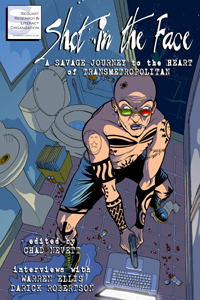On Christmas Day 2013, my brother gave me a booster pack of random, non-sequential issues from a variety of popular comic book titles that syndicated in the late eighties to mid nineties. The nineties was a time of groundbreaking work in the comic community that gave birth to the age of modern comics. Sometimes, not so much. These are snapshots of the industry at its best and worst. This is Brian’s Comic Book Grab Bag.
The New Warriors #33 Cover.
The New Warriors Volume 1 #33
“Forces of Darkness, Forces of Light Part 2 –The Soul Canyons”
Writer – Fabian Nicieza
Penciler – Darick Robertson
Inker – Larry Mahlstedt
Letterer – Joe Rosen
Two things are certain in comic books: Resurrection and Dualism. So they say.
The New Warriors is one of those serials that might break my begrudging respect for Marvel. It’s a hodgepodge of characters, many of which I know nothing about. A few throwbacks are in there, generally the veterans that occupy the background. I think they are supposed to remind the reader that the comic in front of them is a Marvel trade paperback, and not an Image competitor. Granted, I understand that these characters are contemporary to the continuity of the early 90s. Maybe reading a handful of DC trades from the same time would yield similar pangs of confusion? I think I have demonstrated the social phenomenon of In-group Out-group psychology here.
All these characters are distractions, or, better yet, refutations of the primary philosophical principal at work in The New Warriors—that is, dualism. Light and Darkness are both principals, meant to mean opposite things. Light is analogous to purity, order, fealty, an aspect of wholeness even. But darkness doesn’t necessarily entail an opposing value, as it represents a negation or absence of something, namely light. Darkness advocates anarchy, treachery, emptiness, and evil. I don’t believe that these constitute opposites, but rather perspectives evolving out of particular varying circumstances. After all, a Texas blind Salamander isn’t in opposition to its surface dwelling cousins, but a product of its environment. Batman’s allure draws from his striking out of the darkness. Dr. Light, a villain dating to the Silver Age, uses light for committing crimes and creating holograms to hide his presence. His luminary abilities are hardly illuminating, but cast a shadow on truth and justice! Verily, these characters confound dualism, even though they operate in a world operating on platonic forms predicating truth, justice, et al.
Microwave Emissions? It must be that!
So, despite the inconsistencies of the DC universe, Marvel’s take on Darkness is less philosophical. Rather than encompassing a higher principal, it is a realm that pours into the Marvel continuum, known as Darkforce. Characters, both good and evil, within the Marvel universe become tied and connected to Darkforce rather arbitrarily, which is sad given how intriguing the principal is. Since the late 70s, Darkforce has become the deus ex machina of particularly bothersome idiosyncrasies concerning particular powers and abilities exhibited within Marvel cannon. Wikipedia’s words on the subject explain the specifics of how the Marvel universe has embraced it. Suffice to say, I felt underwhelmed by how it was executed in issue #33 of The New Warriors.
Meant to reveal the particulars of the extra-dimensional essence, Part 2 of the Forces of Darkness, Forces of Light arc doesn’t impress upon me the urgency of this impending conflict. I admit that my brother’s boon excludes the first issue (which I assume provides some clarity) of the arc, #32, but it already appears that many Marvel heroes, including Cloak (from Cloak and Dagger) and Nightcrawler channel or access this energy source without much worry. Here, in issue #33, the black sludge that covers Manhattan and drives the denizens mad demands some insight. After all, I was under the assumption that Marvel’s angle was always presenting normal folks with tremendous power, always fighting with their super-nature to remain normal and extraordinary simultaneously. Why is it, then, that Nightcrawler and Cloak have gone so long without succumbing to the madness? Are they somehow above normal humans? Is Cloak… the Batman?
Perhaps I am being a little hard on the concept. Bias aside, as well as the near exhausted narrative device of confronting one’s own darkness, one gleans an intriguing take on comic dualism within the Cheetos-stained pages of issue #33. Rage (i.e. Black Shazam), after defeating the black ooze that encompassed his body moments earlier, remarks solemnly, “I could feel that stuff taking me over… I got angrier, but part of me wanted to let it control me.” This constitutes a poisonous alternative to dualism, because Rage is implying that Darkforce amplifies the inner darkness of the host body. Dualism is all about “either-or,” not “both-and.” Clearly this Ghostbusters goo is more than meets the eye.
Rage's summation of Darkforce.
En media res, there is no resolution to what is going on in the issue at hand. Dr. Strange explores the origins of the conflict initiated by Darkforce while The New Warriors blindly confront the evil that is laying waste to Manhattan. Strangely, much of the issue’s focus is centered on the banter between Spiderman and Speedball, which detracts from the gravity of the conflict and causes the reader to lose faith in their ability to actually do anything to stop it. The pacing is very slow, with Firestar’s rays being the only thing stopping the advance of the evil sludge. All the while, my spidey-sense tingles. “These people are worse at their day jobs than I am. Where is Oracle when you need her?” On its own merits, aside from some well written repartee between Spiderman and his teammates, The New Warriors lacks the edgy, groundbreaking material it claims to exalt. By the end of the issue I felt the Darkforce engulfing me, changing me, pressing me to put The New Warriors down and read more Promethea.
It's a buddy cop film, with spandex!
4 Bumpy Nights (of 10)




















































